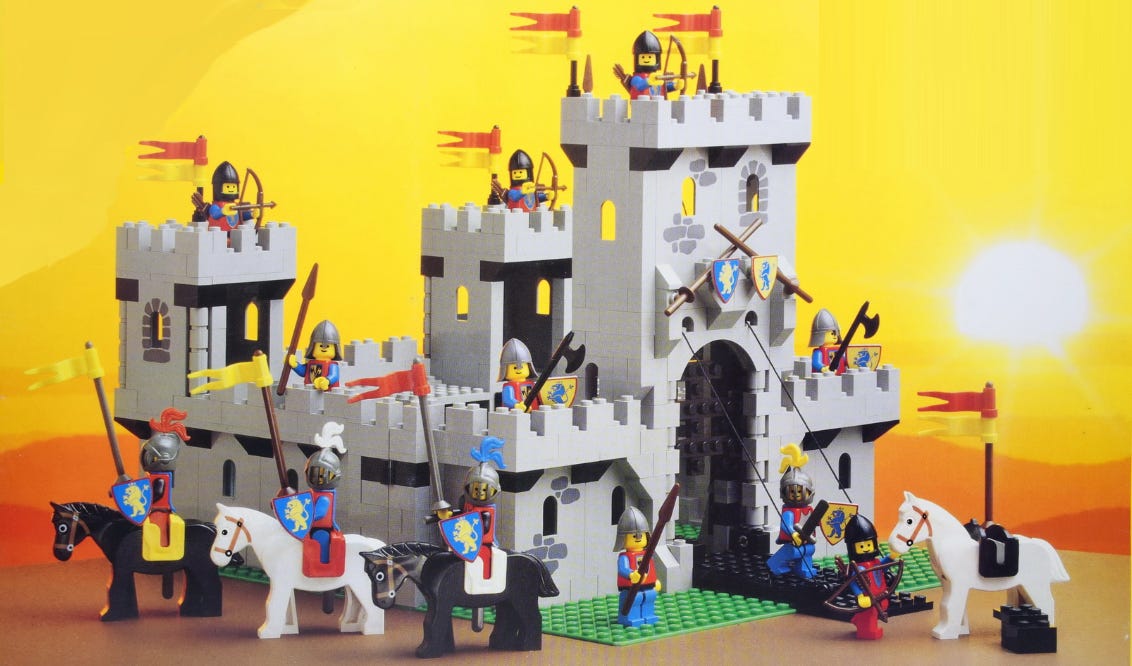The Sebastopol Times is taking a break from news over the holidays. We got 24 submissions to our personal essay contest. This is one of several essays we will be publishing between now and New Year’s.
By Evan Clark
When I was a kid, I purchased a discounted castle set from my elementary school friend who was growing out of LEGO and now liked Minecraft. I built the set according to its instructions, and everything was gravy. Then I got bored and swapped the heads, helmets, torsos, legs, and weapons of all the good guys and bad guys. It’s been a while since combinatorics, but given 12 mini-figures (three head varieties, four helmet varieties, five torso varieties, five leg varieties, seven weapon varieties), I could make 2,100 permutations of castle soldier.
Several months later, I was carrying the castle one day to show my parents a particular battle scenario I had cooked up, and my clumsy fingers dropped it on the floor. It naturally shattered into hundreds of component pieces, the 12 Frankensteined figures finally making their escape under cabinets and tables. I was heartbroken. My carefully curated castle had been destroyed! Worse yet, I had thrown away the instructions weeks earlier with the foolish confidence that my fortifications would never need rebuilding.
This particular castle set has 664 pieces. I began rebuilding the castle to the best of my memory, using the pieces I could find from that bin. Eventually, I ended up with a similar castle that had a smaller surface area but with taller, more imposing walls and more defensible crenellations. The 12 mini-figures now had a new arena, one generated from my prepubescent mind into one of the 664 available permutations.
This pattern would repeat for me: I’d get a new set, build it as intended, get bored, screw around, and inevitably break it, either by accident or purposefully to extract a desired part. Then the remainder would be completely disassembled and homogenized with the other pieces in the bin. After that, in order to build something, I would dig deep in the bin to find small pieces or pluck larger plates and bricks off the top. Later, I got a sorting container with 25 drawers and would spend hours developing a viable sorting system that encompassed most bricks and left few outliers (why have a miscellaneous drawer when you’ve already got the bin?). This improved my creative output tremendously.
It’s been a few years since I built LEGO. I think the last set I bought was this dinosaur skeleton set in 2020, notable for its low price per piece. (910 pieces for $60 is extraordinary value.) I kept the dinosaurs mostly intact since I moved out of my childhood home, but they were integrated into a hulking behemoth of a COVID creation (see below) where I challenged myself to use every single piece in the bin. I failed, by the way, in case you might've been wondering.
What’s the moral here? Maybe it’s that change is inevitable. (Is it that obvious I’ve recently read Octavia Butler’s Parable of the Sower?) Maybe it’s that if you’ve got a bin of pieces that you don’t particularly like, it might suit you to build them in a certain permutation rather than another. Maybe it’s that if there’s a piece of yourself or your ambient surroundings that you don’t like, you really should swap it out, try moving it somewhere else, or exchange it for someone else’s that suits you better. Maybe all it takes is for one piece to move.
Evan Clark is a Georgist, an environmentalist, and a YIMBY technophile.



This is a true honor to read.